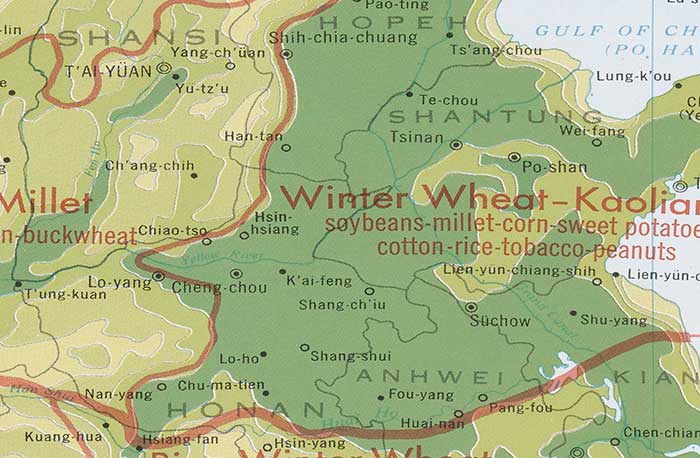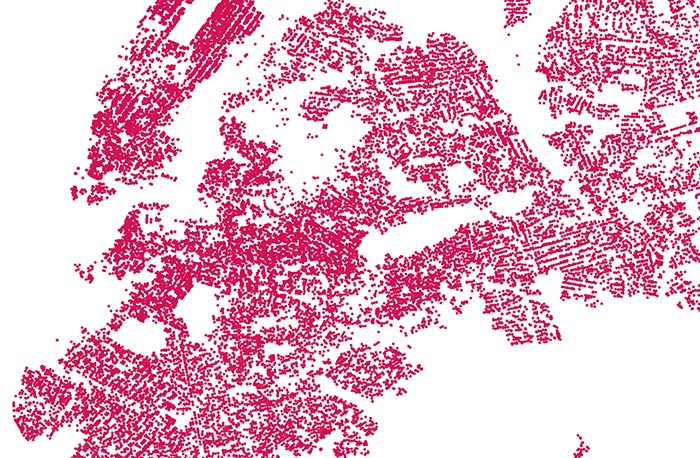View Metadata
Census Tracts (500k Carto Boundary File), WI 2020
- Identification Information
- Spatial Reference Information
- Data Quality Information
- Distribution Information
- Spatial Representation Information
- Metadata Reference Information
Identification Information
- Citation
- Title
- Census Tracts (500k Carto Boundary File), WI 2020
- Originator
- U.S. Census Bureau
- Publication Date
- 2021-11-17
- Edition
- 2020
- Geospatial Data Presentation Form
- mapDigital
- Collection Title
- Statewide
- Abstract
- This data represents Census Tracts from the U.S. Census Bureau for Wisconsin in 2020. [The 2020 cartographic boundary shapefiles are simplified representations of selected geographic areas from the U.S. Census Bureau's Master Address File / Topologically Integrated Geographic Encoding and Referencing (MAF/TIGER) Database (MTDB). These boundary files are specifically designed for small-scale thematic mapping. When possible, generalization is performed with the intent to maintain the hierarchical relationships among geographies and to maintain the alignment of geographies within a file set for a given year. Geographic areas may not align with the same areas from another year. Some geographies are available as nation-based files while others are available only as state-based files. Census tracts are small, relatively permanent statistical subdivisions of a county or equivalent entity, and were defined by local participants as part of the 2020 Census Participant Statistical Areas Program. The Census Bureau delineated the census tracts in situations where no local participant existed or where all the potential participants declined to participate. The primary purpose of census tracts is to provide a stable set of geographic units for the presentation of census data and comparison back to previous decennial censuses. Census tracts generally have a population size between 1,200 and 8,000 people, with an optimum size of 4,000 people. When first delineated, census tracts were designed to be homogeneous with respect to population characteristics, economic status, and living conditions. The spatial size of census tracts varies widely depending on the density of settlement. Physical changes in street patterns caused by highway construction, new development, and so forth, may require boundary revisions. In addition, census tracts occasionally are split due to population growth, or combined as a result of substantial population decline. Census tract boundaries generally follow visible and identifiable features. They may follow legal boundaries such as minor civil division (MCD) or incorporated place boundaries in some states and situations to allow for census tract-to-governmental unit relationships where the governmental boundaries tend to remain unchanged between censuses. State and county boundaries always are census tract boundaries in the standard census geographic hierarchy. In a few rare instances, a census tract may consist of noncontiguous areas. These noncontiguous areas may occur where the census tracts are coextensive with all or parts of legal entities that are themselves noncontiguous. For the 2010 Census and beyond, the census tract code range of 9400 through 9499 was enforced for census tracts that include a majority American Indian population according to Census 2000 data and/or their area was primarily covered by federally recognized American Indian reservations and/or off-reservation trust lands; the code range 9800 through 9899 was enforced for those census tracts that contained little or no population and represented a relatively large special land use area such as a National Park, military installation, or a business/industrial park; and the code range 9900 through 9998 was enforced for those census tracts that contained only water area, no land area.]
- Purpose
- This data is intended for reference and mapping purposes, and may be used for basic applications such as viewing, querying, and map output production, or to provide a basemap to support graphical overlays and analysis with other spatial data. [These files were specifically created to support small-scale thematic mapping. To improve the appearance of shapes at small scales, areas are represented with fewer vertices than detailed TIGER/Line Shapefiles. Cartographic boundary files take up less disk space than their ungeneralized counterparts. Cartographic boundary files take less time to render on screen than TIGER/Line Shapefiles. You can join this file with table data downloaded from American FactFinder by using the AFFGEOID field in the cartographic boundary file. If detailed boundaries are required, please use the TIGER/Line Shapefiles instead of the generalized cartographic boundary files.]
- Supplemental Information
- This is an archived copy of the data held at UW-Madison.
- Temporal Extent
- Time Instant
- 2020-01-01T00:00:00
- Bounding Box
- West
- -92.888114
- East
- -86.805415
- North
- 47.080621
- South
- 42.491983
- ISO Topic Category
- boundaries
- Place Keyword
-
Wisconsin
- Place Keyword Thesaurus
- GNS
- Theme Keyword
-
Census districts
- Theme Keyword Thesaurus
- LCSH
- Resource Constraints
- Use Limitation
- [Use Constraints: The intended display scale for this file is 1:500,000. This file should not be displayed at scales larger than 1:500,000. These products are free to use in a product or publication, however acknowledgement must be given to the U.S. Census Bureau as the source. The boundary information is for visual display at appropriate small scales only. Cartographic boundary files should not be used for geographic analysis including area or perimeter calculation. Files should not be used for geocoding addresses. Files should not be used for determining precise geographic area relationships.]
- Legal Constraints
- Use Limitation
- Although this data is being distributed by the University of Wisconsin-Madison, no warranty expressed or implied is made by the University as to the accuracy of the data and related materials. The act of distribution shall not constitute any such warranty, and no responsibility is assumed by the University in the use of this data, or related materials.
- Status
- completed
- Maintenance and Update Frequency
- unknown
- Language
- eng
- Credit
- U.S. Census Bureau
- Point of Contact
- Contact
- U.S. Census Bureau
Spatial Reference Information
- Reference System Identifier
- Code
- 4269
- Code Space
- EPSG
- Version
- 9.7
Data Quality Information
- Absolute External Positional Accuracy
- Evaluation Method
- [Data are not accurate. Data are generalized representations of geographic boundaries at 1:500,000.]
- Result
- Unified Code of Units of Measure m Missing
- Completeness Commission
- Evaluation Method
- [The cartographic boundary files are generalized representations of extracts taken from the MAF/TIGER Database. Generalized boundary files are clipped to a simplified version of the U.S. outline. As a result, some off-shore areas may be excluded from the generalized files. Some small geographic areas, holes, or discontiguous parts of areas may not be included in generalized files if they are not visible at the target scale.]
- Completeness Commission
- Evaluation Method
- [The cartographic boundary files are generalized representations of extracts taken from the MAF/TIGER Database. Generalized boundary files are clipped to a simplified version of the U.S. outline. As a result, some off-shore areas may be excluded from the generalized files. Some small geographic areas, holes, or discontiguous parts of areas may not be included in generalized files if they are not visible at the target scale.]
- Lineage
- Process Step
- Description
- Provided access to archived data at UW-Madison.
- Process Date
- 2021-11-17T00:00:00
Distribution Information
- Format Name
- Shapefile
- Format Version
- 1.0
- Distributor
- University of Wisconsin-Madison
- Distributor
- U.S. Census Bureau
- Online Access
- https://gisdata.wisc.edu/public/WI_CensusCBF_Tracts_2020.zip
- Protocol
- WWW:DOWNLOAD-1.0-http--download
- Name
- GeoData@Wisconsin
- Function
- download
Spatial Representation Information
- Vector
- Topology Level
- geometryOnly
- Vector Object Type
- composite
- Vector Object Count
- 1528
Metadata Reference Information
- Hierarchy Level
- dataset
- Metadata File Identifier
- 8E7F393C-ED8B-4D54-9CFC-8356F473187A
- Metadata Point of Contact
- Name
- Arthur H. Robinson Map Library
- Position Name
- Metadata technician
- Delivery Point
- 550 N. Park Street
- City
- Madison
- Administrative Area
- WI
- Postal Code
- 53706
- Country
- US
- askmap@library.wisc.edu
- Phone
- (608) 262-1471
- Metadata Date Stamp
- 2021-11-17
- Metadata Standard Name
- ISO 19139 Geographic Information - Metadata - Implementation Specification
- Metadata Standard Version
- 2007
- Character Set
- utf8


